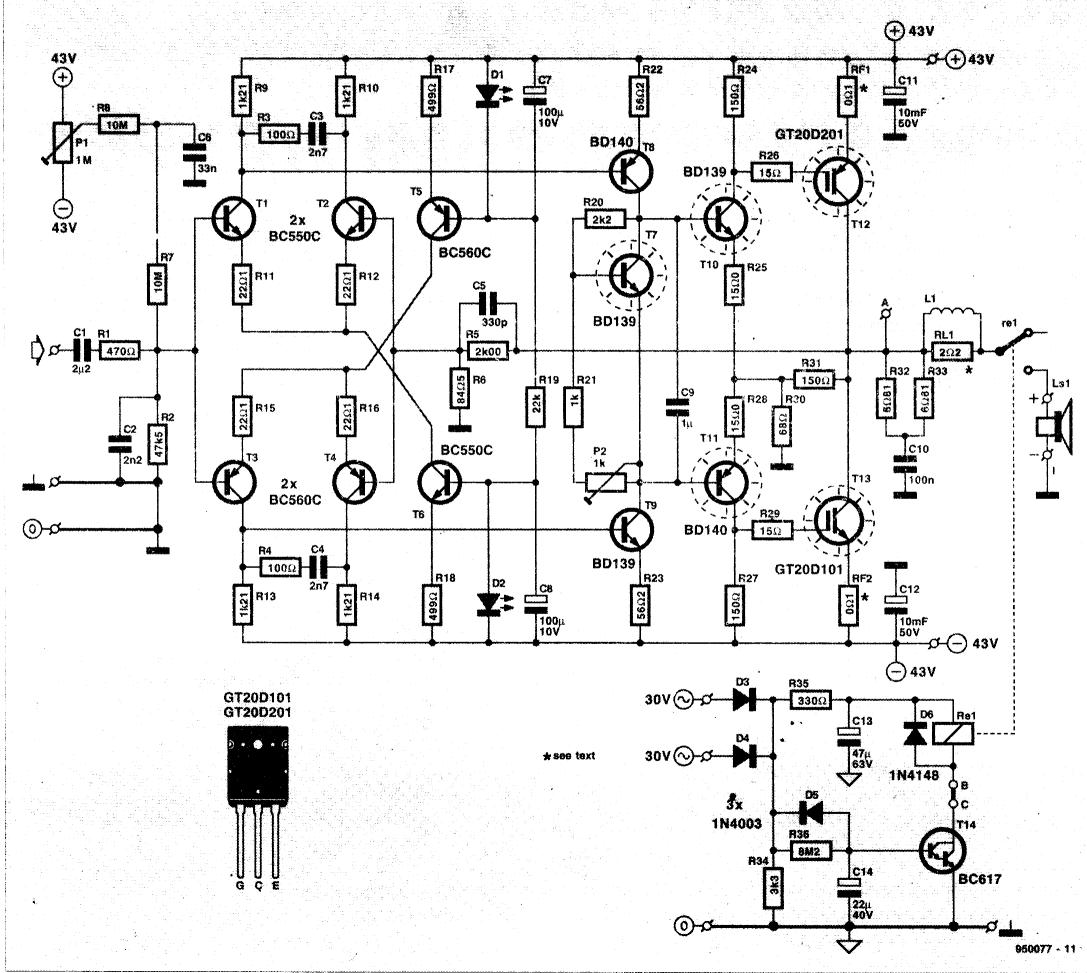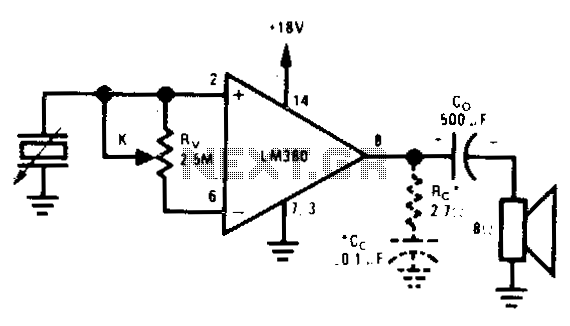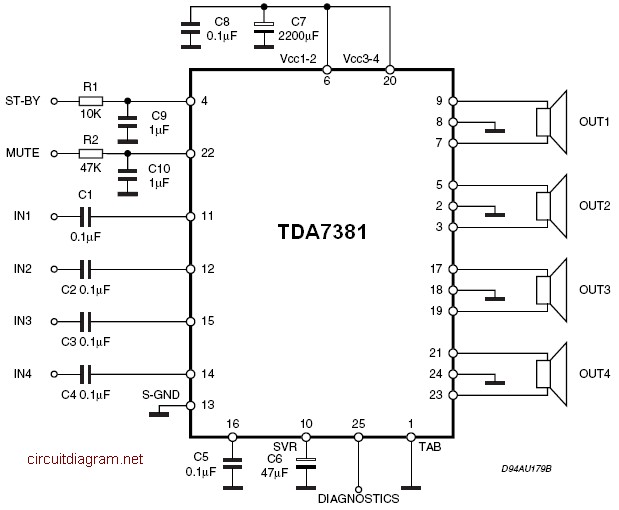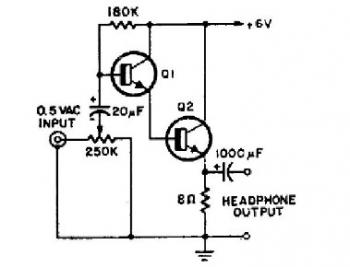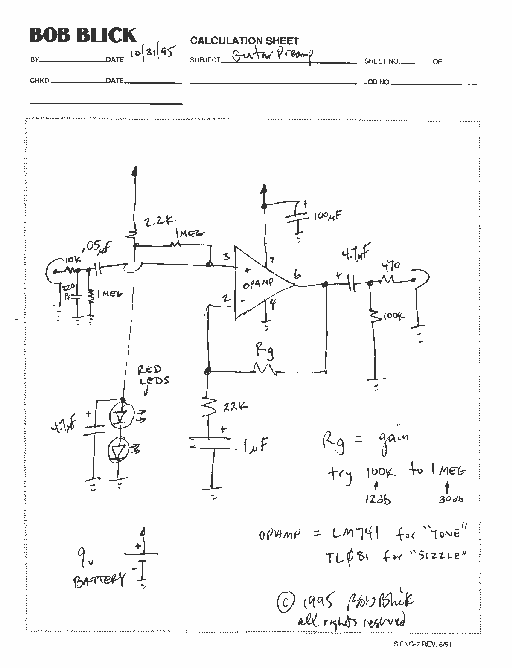
; Distribution Amplifier
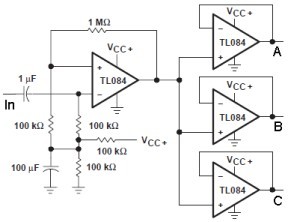
A distribution amplifier can accept multiple input channels and route them to specific outputs. This term refers to a device that outputs the same signal to several outputs based on a single input. The outputs are identical, and the signals transition simultaneously. A similar approach is used in integrated circuit (IC) functions; for example, a 1-to-10 clock buffer is utilized for clock distribution. Various logic functions exist to minimize signal skew between outputs and mitigate the fanout issue of driving multiple outputs. IC decoders also serve as a form of signal distribution. Additionally, semiconductor analog switches can distribute or fan out signals to multiple locations. Distribution amplifiers can be designed for different signal types, such as audio, video, or digital signals, each requiring distinct designs. At the circuit level, these amplifiers or drivers may be rated at 50 ohms or 75 ohms and are referred to as line drivers or cable drivers. The distribution amplifier circuit can resemble the clock buffer example but will utilize ICs appropriate for the required interface level, such as TTL ICs for digital signals or operational amplifiers for analog signals. The circuit fragment described represents a distribution amplifier for audio signals. The capacitor values are selected to affect the audio frequency range, although they can be adjusted to alter the frequency range. The operational amplifier used is a TL084, which has a unity gain bandwidth of 3 MHz. The TL084 was chosen due to its quad package containing four operational amplifiers. However, any operational amplifier, including the 741 Op Amp, can be used as long as its bandwidth matches the frequency of interest. The data sheet specifies a 14-pin DIP package or a 20-pin flat pack, indicating the device's age, as there is no SOIC option available. The first operational amplifier functions as a preamplifier with a gain of ten, which can be modified by adjusting either the 1 Megohm or 10 kOhm resistors. The input is applied through a 1 µF capacitor to block any DC voltage from the previous stage, although this component may be unnecessary depending on the preceding circuit. The three distribution amplifiers are configured as unity gain voltage followers. The circuit diagram was adapted from an example in an application note or book, with the original circuit dating back to the 1980s, which also employed 50 µF capacitors and 5.1 kOhm load resistors at the output of each buffer, though these components are not shown here.
A distribution amplifier is a critical component in various electronic systems, serving to replicate and distribute signals across multiple outputs while maintaining signal integrity. The architecture typically includes a preamplifier stage followed by multiple buffer stages. The preamplifier stage is designed to provide initial gain and may include adjustable resistors to customize the gain based on application requirements. The use of a capacitor at the input is essential for DC blocking, ensuring that only AC signals are processed, which is particularly important in audio applications where DC offsets can distort the signal.
The subsequent buffer stages, configured as voltage followers, ensure that the output signals maintain the same voltage level as the input without introducing additional gain. This configuration effectively isolates the input from the outputs, preventing loading effects that could degrade signal quality. The choice of operational amplifier, such as the TL084, is crucial as it provides the necessary bandwidth and performance characteristics for audio applications. The operational amplifier's quad configuration allows for compact design, reducing the overall footprint of the circuit while providing multiple amplification stages.
In designing a distribution amplifier, careful consideration must be given to the impedance matching of the circuit. The choice between 50 ohm and 75 ohm configurations typically depends on the application, with 75 ohms being common in video applications and 50 ohms often used in RF and audio contexts. The output load resistors and capacitors play a significant role in determining the frequency response and stability of the amplifier, necessitating precise selection based on the intended use.
In summary, distribution amplifiers are versatile devices that can be tailored to meet the specific needs of various signal types, ensuring reliable and high-fidelity signal distribution across multiple outputs. Their design must consider factors such as gain, bandwidth, impedance, and signal integrity to achieve optimal performance in a wide range of applications.Although a distribution amplifier may accept different input channels and output those to particular outputs. The term is meant to describe something that outputs the same signal to some number of outputs,based on one input.
The outputs are identical, and the signals all appear or transition at the same time. A similar approached is used with some IC functions, an example would be a 1-to-10 Clock Buffer, used for clock distribution. Many other logic functions exist to provide minimum signal skew between outputs and eliminate the fanout problem of driving multiple outputs. IC Decoders are another form of signal distribution. Semiconductor Analog Switches are also used to distribute, or fan out signals to more than one location.
As a piece of equipment, a distribution amplifier could come in many forms. The distribution amplifier might be designed to fan-out audio signals, video signals or digital signals, and in each case being a completely different design. At the circuit level the amplifiers, or drivers, could be 50 ohm or 75 ohms and might be called lines drivers or cable drivers.
At the circuit level the distribution amplifier would take on the form of the clock buffer example but would use ICs of what ever type would have the correct interface level. For example TTL ICs for digital logic signals or operational amplifiers for analog signals. The circuit fragment above is meant to represent a distribution amplifier used in the audio range. The capacitor values have been selected to have an effect in the audio frequency range, but they could be altered to change the frequency range.
The operational amplifier used in the circuit is a TL084 which has a unity gain bandwidth of 3Mhz. The TL084 was selected because it`s a quad package and carries all four of the required operational amplifiers. However any operational amplifier, including a 741 Op Amp, would work as long as the bandwidth of the amplifier matched that of the frequency of interest.
The data sheet indicates a 14 pin DIP package or 20 pin flat pack, which indicates the age of the device [no SOIC option]. The first operation amplifier is intended to be a preamplifier and has a gain of ten. However the gain may be changed by adjusting either the 1Meg or 10k resistors. The input is applied through a 1uF capacitor to block any DC from the previous stage. However as this component may not be required, or reside in the preceding circuit, so may be left out.
The three distribution amplifiers are each unity gain voltage followers. The circuit diagram was modified from an example in an application note, or application book. The original circuit, dating back to the 1980`s also used 50uF capacitors and 5. 1k load resistors on the output of each of the buffers [neither is shown here]. 🔗 External reference
A distribution amplifier is a critical component in various electronic systems, serving to replicate and distribute signals across multiple outputs while maintaining signal integrity. The architecture typically includes a preamplifier stage followed by multiple buffer stages. The preamplifier stage is designed to provide initial gain and may include adjustable resistors to customize the gain based on application requirements. The use of a capacitor at the input is essential for DC blocking, ensuring that only AC signals are processed, which is particularly important in audio applications where DC offsets can distort the signal.
The subsequent buffer stages, configured as voltage followers, ensure that the output signals maintain the same voltage level as the input without introducing additional gain. This configuration effectively isolates the input from the outputs, preventing loading effects that could degrade signal quality. The choice of operational amplifier, such as the TL084, is crucial as it provides the necessary bandwidth and performance characteristics for audio applications. The operational amplifier's quad configuration allows for compact design, reducing the overall footprint of the circuit while providing multiple amplification stages.
In designing a distribution amplifier, careful consideration must be given to the impedance matching of the circuit. The choice between 50 ohm and 75 ohm configurations typically depends on the application, with 75 ohms being common in video applications and 50 ohms often used in RF and audio contexts. The output load resistors and capacitors play a significant role in determining the frequency response and stability of the amplifier, necessitating precise selection based on the intended use.
In summary, distribution amplifiers are versatile devices that can be tailored to meet the specific needs of various signal types, ensuring reliable and high-fidelity signal distribution across multiple outputs. Their design must consider factors such as gain, bandwidth, impedance, and signal integrity to achieve optimal performance in a wide range of applications.Although a distribution amplifier may accept different input channels and output those to particular outputs. The term is meant to describe something that outputs the same signal to some number of outputs,based on one input.
The outputs are identical, and the signals all appear or transition at the same time. A similar approached is used with some IC functions, an example would be a 1-to-10 Clock Buffer, used for clock distribution. Many other logic functions exist to provide minimum signal skew between outputs and eliminate the fanout problem of driving multiple outputs. IC Decoders are another form of signal distribution. Semiconductor Analog Switches are also used to distribute, or fan out signals to more than one location.
As a piece of equipment, a distribution amplifier could come in many forms. The distribution amplifier might be designed to fan-out audio signals, video signals or digital signals, and in each case being a completely different design. At the circuit level the amplifiers, or drivers, could be 50 ohm or 75 ohms and might be called lines drivers or cable drivers.
At the circuit level the distribution amplifier would take on the form of the clock buffer example but would use ICs of what ever type would have the correct interface level. For example TTL ICs for digital logic signals or operational amplifiers for analog signals. The circuit fragment above is meant to represent a distribution amplifier used in the audio range. The capacitor values have been selected to have an effect in the audio frequency range, but they could be altered to change the frequency range.
The operational amplifier used in the circuit is a TL084 which has a unity gain bandwidth of 3Mhz. The TL084 was selected because it`s a quad package and carries all four of the required operational amplifiers. However any operational amplifier, including a 741 Op Amp, would work as long as the bandwidth of the amplifier matched that of the frequency of interest.
The data sheet indicates a 14 pin DIP package or 20 pin flat pack, which indicates the age of the device [no SOIC option]. The first operation amplifier is intended to be a preamplifier and has a gain of ten. However the gain may be changed by adjusting either the 1Meg or 10k resistors. The input is applied through a 1uF capacitor to block any DC from the previous stage. However as this component may not be required, or reside in the preceding circuit, so may be left out.
The three distribution amplifiers are each unity gain voltage followers. The circuit diagram was modified from an example in an application note, or application book. The original circuit, dating back to the 1980`s also used 50uF capacitors and 5. 1k load resistors on the output of each of the buffers [neither is shown here]. 🔗 External reference
